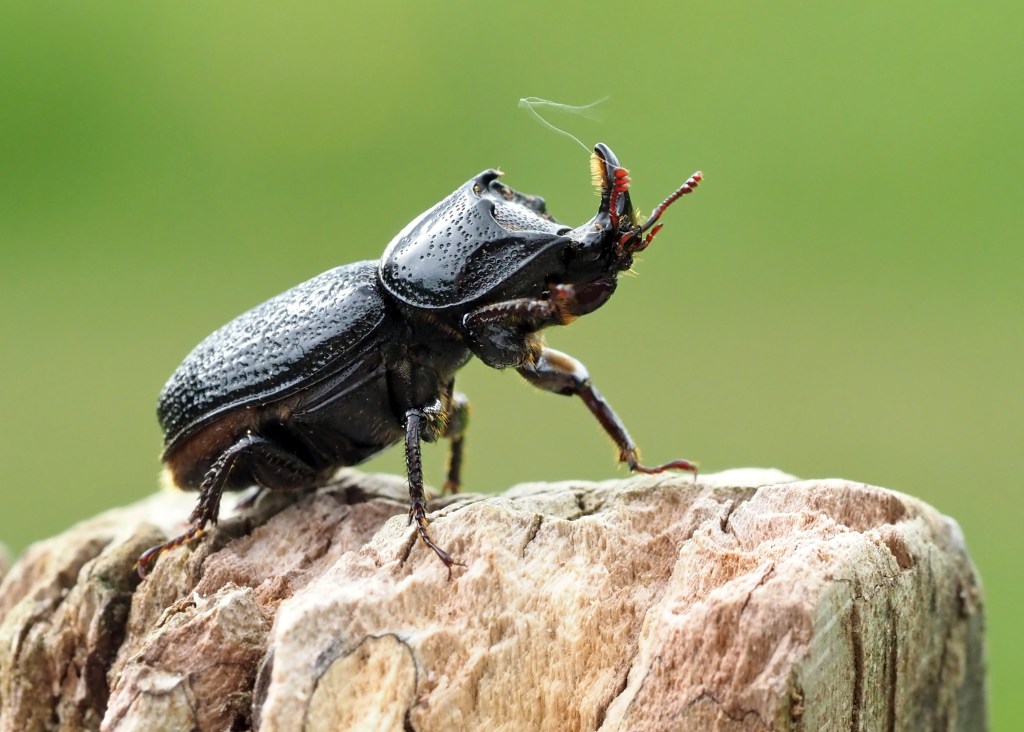
I was delighted to come across this little (c. 10-15mm) stag beetle, the horned or rhinoceros stag beetle, Sinodendron cylindricum (L.), emerging from an old, dry tree stump, and flying off to start a new colony elsewhere. They have developed as larvae, inside the decaying wood, for up to three years, I think. Eventually, they pupate and subsequently emerge through the surface of the wood to fly off and find a new site, where they will mate and begin a new generation.
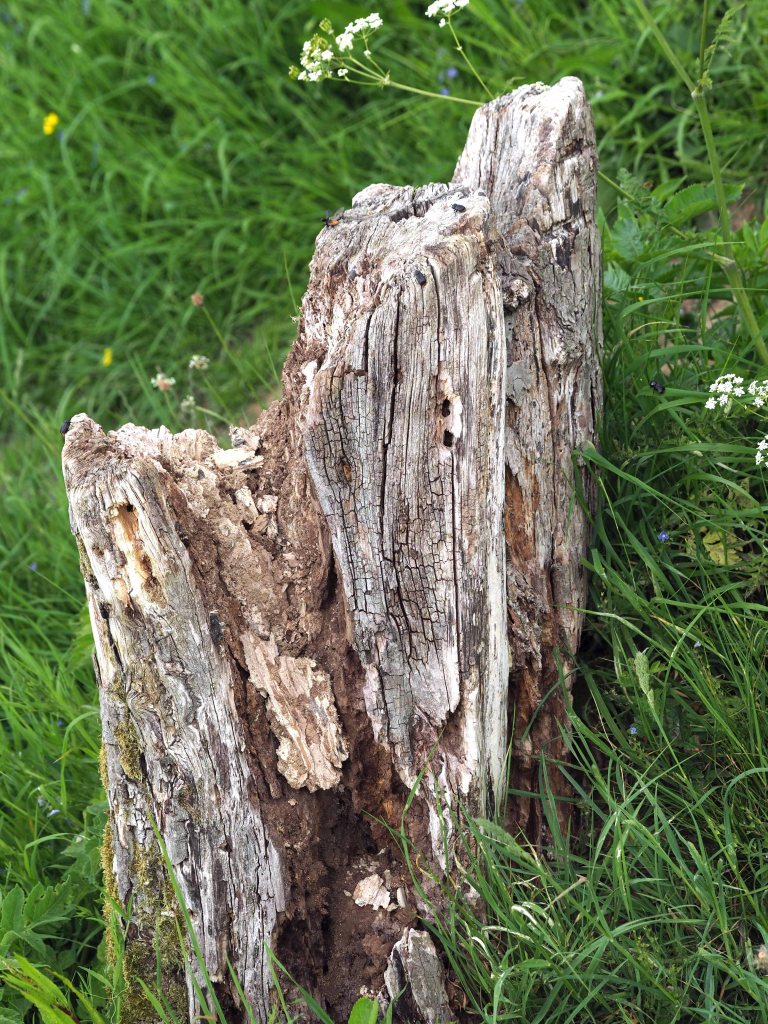
The beetles were walking up to the top of the tree stump, and slowly taking off. The males have a more prominent horn than the females, presumably a secondary sexual feature, which may play a role in mate choice or even male-male competition? I.e. for fighting. The lateral margins of the horn in the male are fringed with backward pointing golden hairs (see top, and below), like two little combs, although I do not know what they are used for? This photograph also shows the deeply excavated (i.e. concave) pronotum, behind the head. This may have something to do with burrowing through wood and excavating galleries?

I did not see many females, but one took off from lower down on the tree stump, and another from the top (see below).
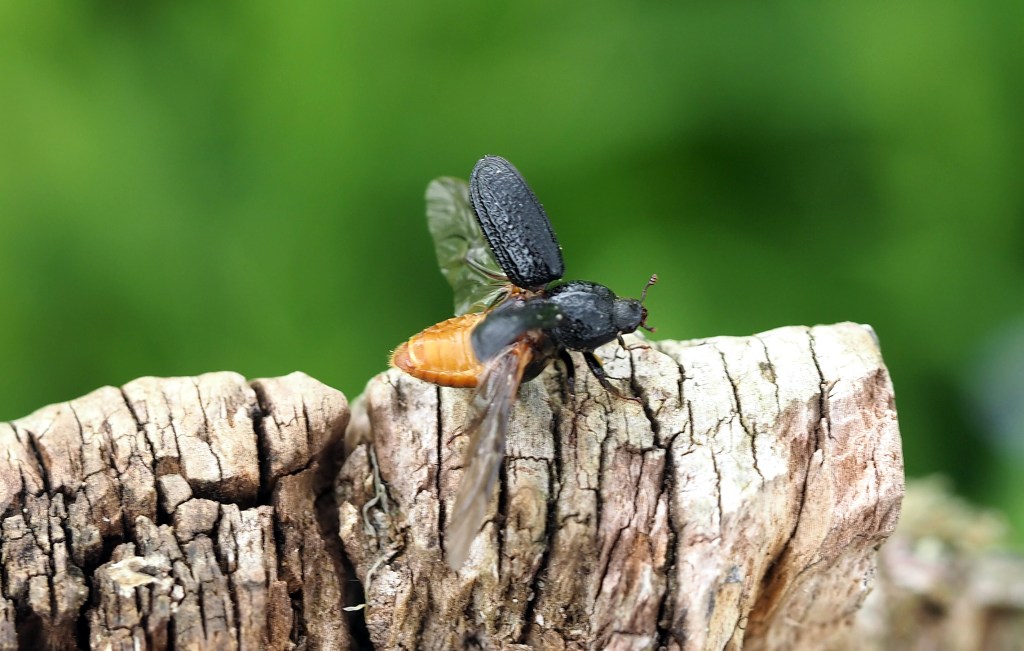


These beetles have a lovely sculpted surface – called coarsely punctate – which might help them when they are burrowing into wood, perhaps?

The take off itself was fairly leisurely. The beetle opened its elytra (wing cases) slightly, and extended its abdomen, before opening the wing cases more fully and pinning them back on their hinges. The wings themselves are unfolded, presumably for the first time in its life, and extended. The insect is ready to go from the off. No need to flap its wings and build up its muscles like a young bird; it emerges as an adult, ready to take off and fly! The whole sequence is shown below.
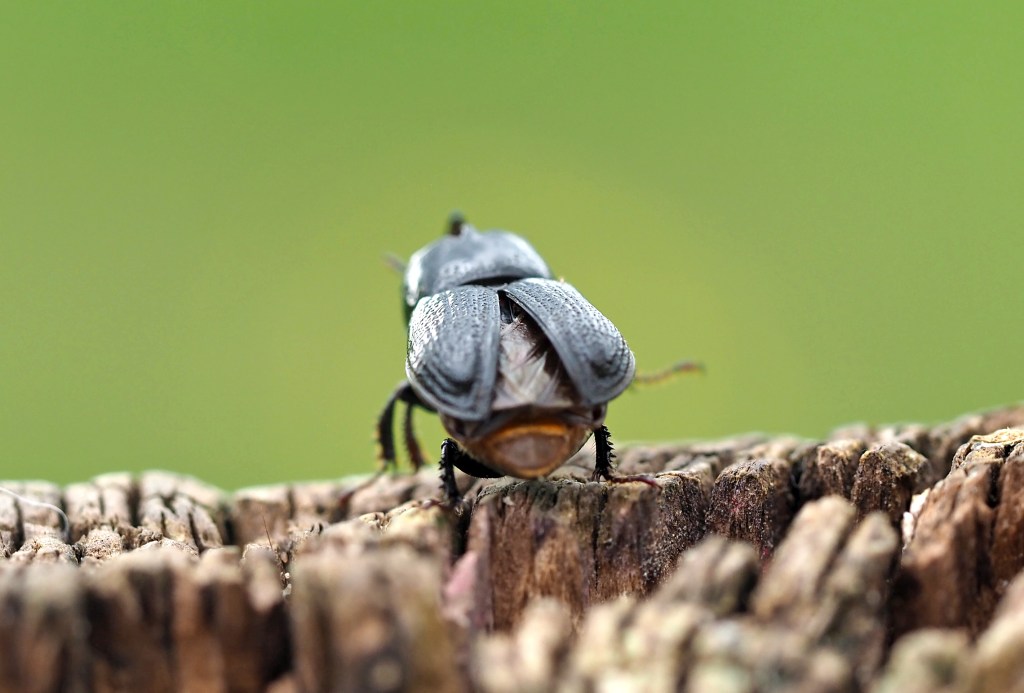
Rhinoceros Stag Beetle
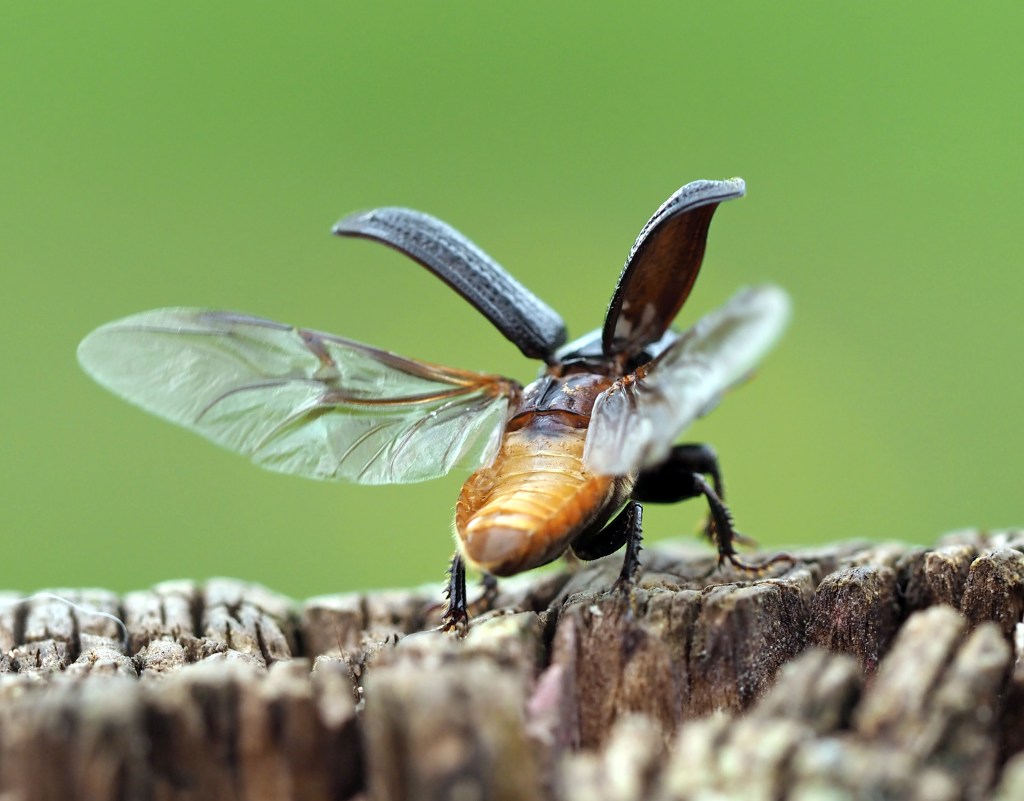
Rhinoceros Stag Beetle

Rhinoceros Stag Beetle
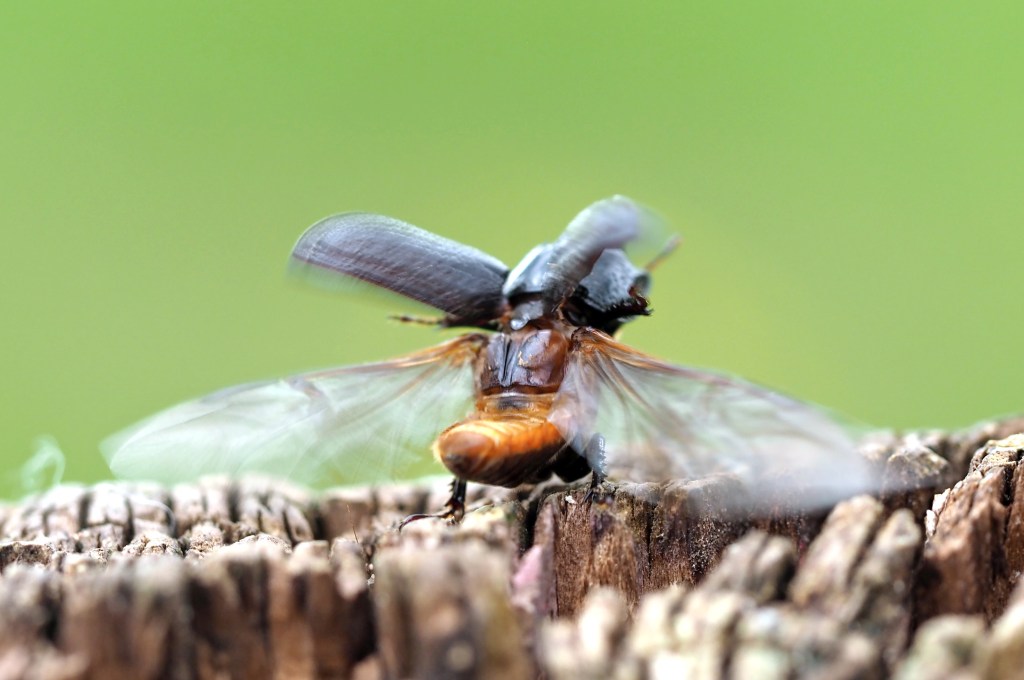
Rhinoceros Stag Beetle
A couple of males had a little joust, or maybe there were just having a friendly nudge, before flying off!
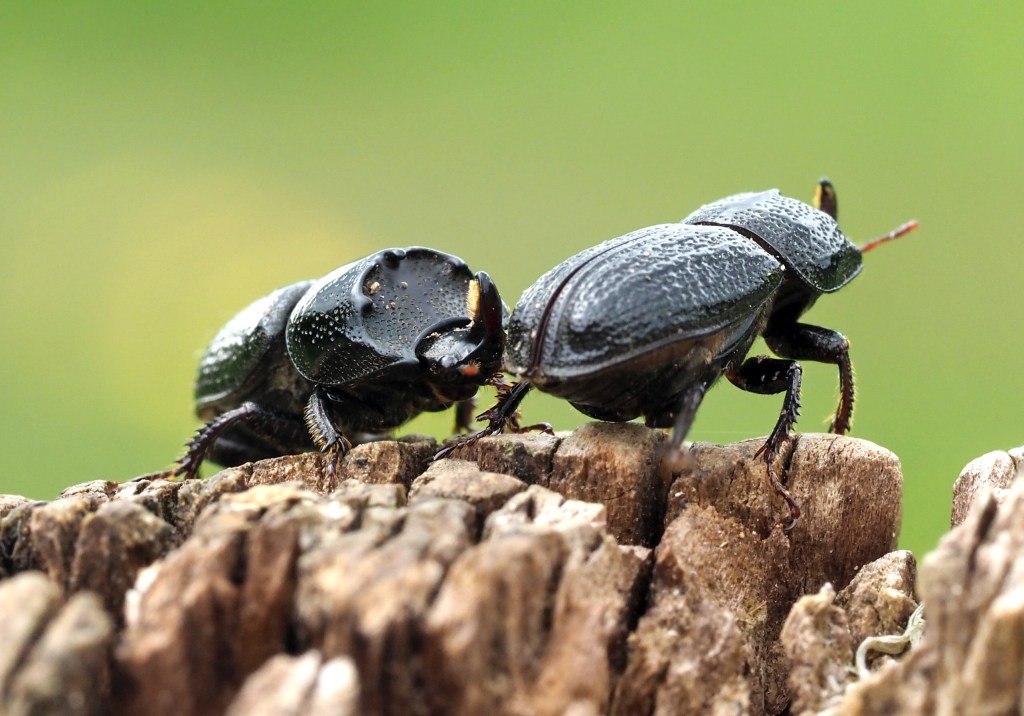
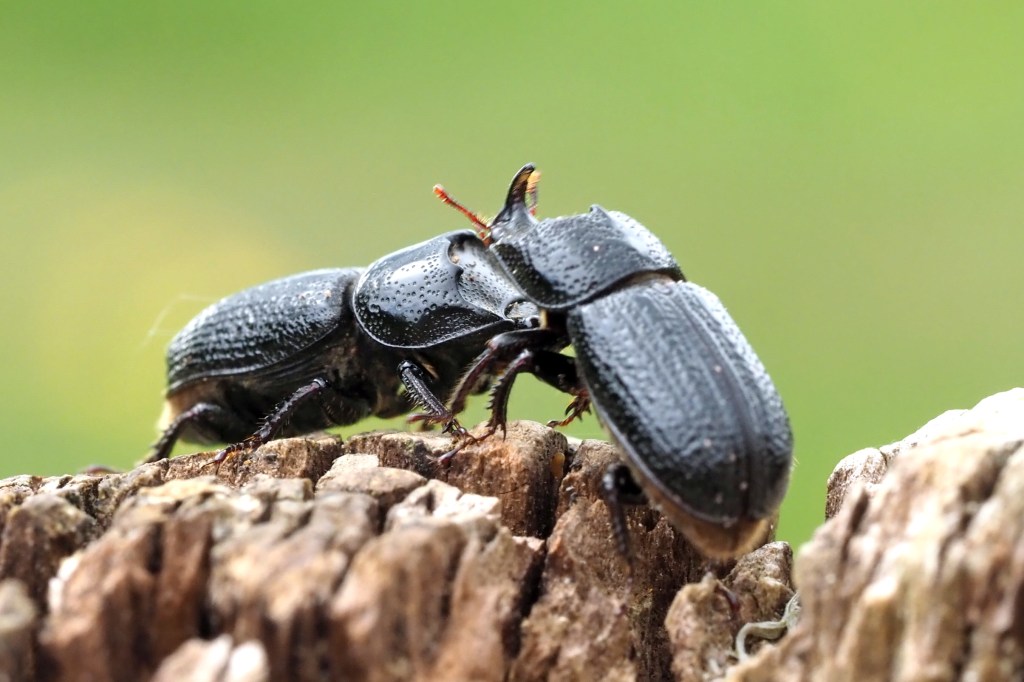
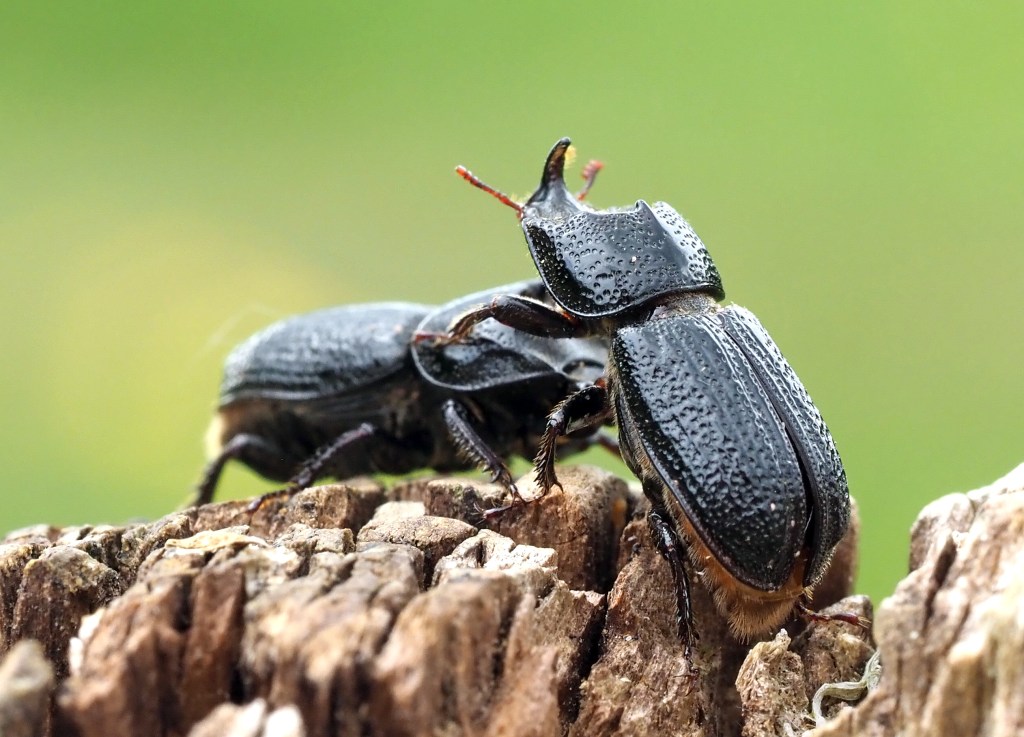
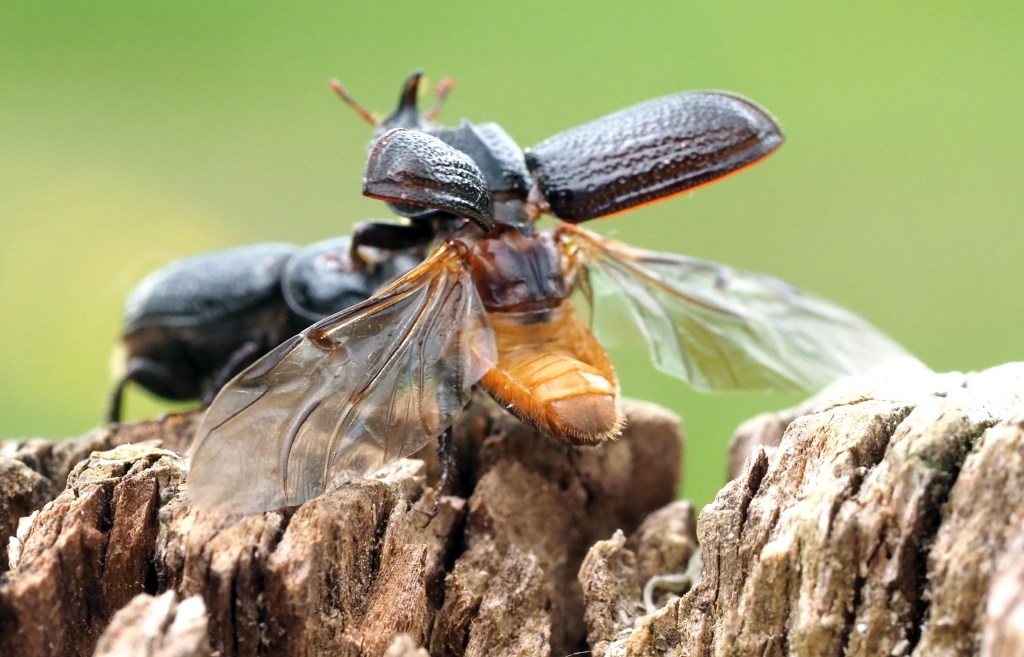
As is often the case, there is much to learn about this beetle. My brief foray into the literature on it did not yield very much. There was a paper published in 1868 on this species, but I could not access it! There are some European papers, which suggest that the species is associated wood attacked by white rot that has already been dead for a few years, and confirming that the larvae take anywhere between two and four years to develop. So, I should count myself lucky to come across them on the very day that they ‘decided’ to leave their larval home and fly off in search of ‘pastures’ – rotting wood in this case – new!
Links
https://www.ukbeetles.co.uk/sinodendron-cylindricum
https://inpn.mnhn.fr/espece/cd_nom/10512?lg=en
References
Chapman, T. A. (1868). Note on the habits of Sinodendron cylindricum during oviposition. Entomol. Month. Mag, 5, 139-141.